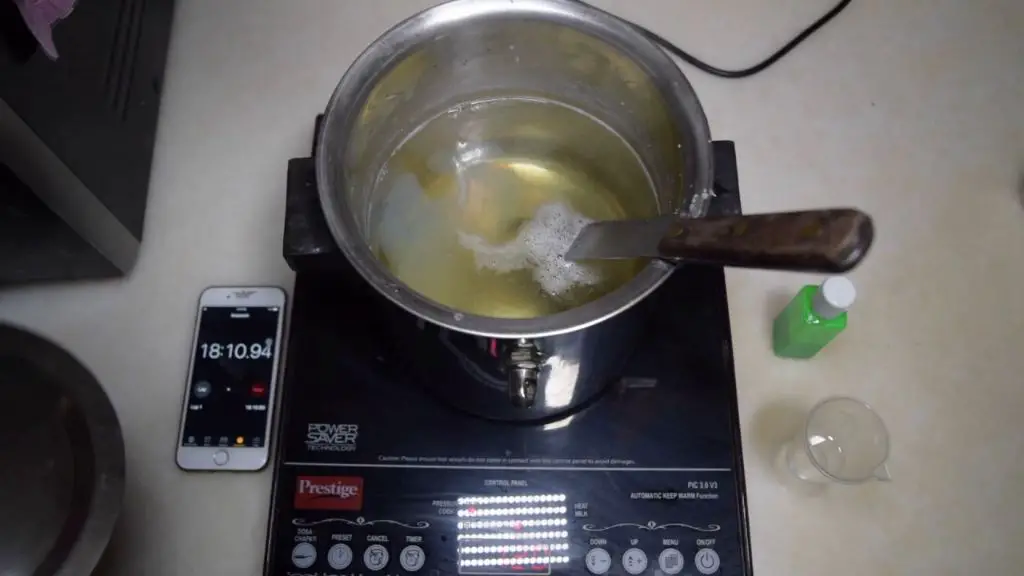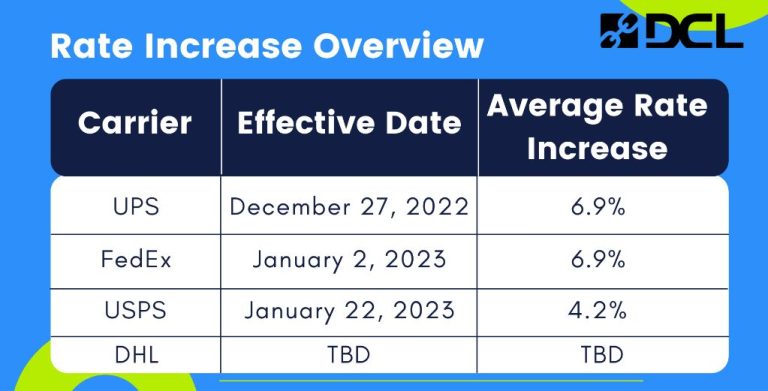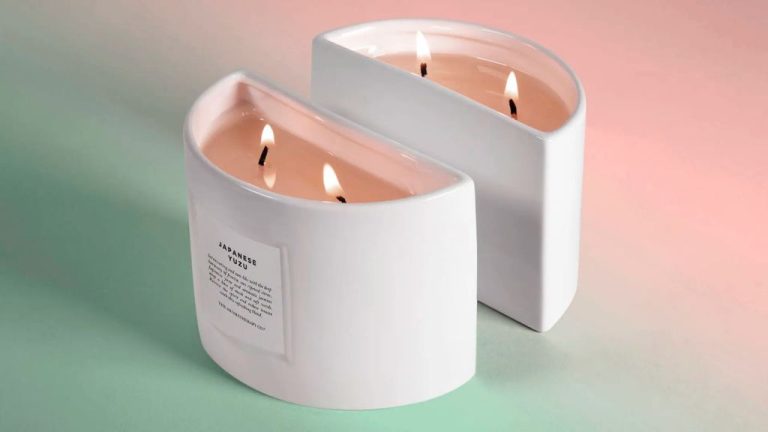Can You Make Money Selling Melt And Pour Soap?
Melt and pour soap making is a method of soap making where premade soap base is melted, combined with colors, fragrances, or other additives, and then poured into molds to set up. The soap base is already saponified, meaning the oils have undergone a chemical reaction with lye to become soap. This makes melt and pour soap making simple, as you don’t have to handle lye or go through the soap making process from scratch. It allows even beginners to create a variety of bar soaps easily and safely.
Melt and pour soap base is available in blocks that can be sliced, grated, or chopped into smaller pieces. It is then melted in the microwave, on the stove, or in a double boiler. Once melted, additives like essential oils, coconut milk, botanicals, clay, and soap colorants can be blended in. The soap is then poured into silicone molds and left to harden back into bars before removing from the molds. The finished soaps can be used just like cold process soap.
Melt and pour soap making opens up creativity in soap design, as the melted base makes it easy to create layers, swirls, embeds, and more. Beautiful designs can be achieved without costly specialty molds. It also allows the ability to create soap with ingredients that would normally not withstand the saponification process of cold process soap making.
Market Opportunity
The global handmade soap market has seen significant growth in recent years and is expected to continue growing. According to GlobeNewswire, the handmade soap market size was valued at $158.79 million in 2023 and is projected to reach $224.45 billion by 2031, growing at a CAGR of 5.94%. Key factors driving this growth include rising consumer interest in natural and organic skincare products, increasing demand for eco-friendly and sustainable products, and a preference for handcrafted and customizable soaps.
The handmade soap segment is gaining significant share in the overall soap market. Consumers are willing to pay premium prices for high-quality handmade soaps that use natural ingredients. The customization offered by handmade soaps along with the perception of them being gentle on skin has attracted many buyers. The global increase in disposable income levels has also enabled customers to spend more on premium handcrafted soap products.
Startup Costs
The startup costs for a melt and pour soap making business can vary greatly depending on the scale of production and types of equipment used. Some of the main costs include:
Equipment – Basic equipment like mixing bowls, pots, utensils and molds can cost around $300 to get started according to How Much Money is Needed to Start a Soap Making Business. More advanced equipment like industrial mixers, cutters, specialty molds and stamping tools can cost thousands more.
Ingredients – The main ingredient is the soap base which costs around $2.32 per pound when buying in bulk quantities according to Pricing Your Melt and Pour Soaps. Additional ingredients like fragrance oils, colors and botanicals will add more costs per batch.
Packaging – Basic packaging like clamshells, shrink wrap, labels and boxes can cost between $1-3 per finished bar of soap. Luxury packaging like printed sleeves, ribbons and tissue paper increases costs.
Profit Margins
Profit margins for handmade soap vary widely depending on whether you are selling wholesale or retail. When selling wholesale to retailers, profit margins are typically around 50-60% of the wholesale price. This means if you sell a bar of soap to a retailer for $5 wholesale, your profit margin on that bar is $2.50-$3. Retail profit margins on handmade soap are generally higher, around 70-80% of the retail price. So if you sell a bar directly to a customer for $10 retail, your profit margin would be $7-$8 per bar (cite: https://www.starterstory.com/ideas/soap-business/profitability).
The key to optimizing profit margins is calculating your costs accurately for labor, packaging, ingredients, shipping, and overhead. Then you can determine wholesale and retail pricing that allows you to earn the profit margins you desire. Many soapmakers recommend pricing your products at 2-3 times the total cost to produce them in order to earn healthy margins (cite: https://www.soapmakingforum.com/threads/profit-margins.50257/). Careful financial planning and cost management is crucial, especially when first starting out in the soap business.
Building Your Brand
Creating a strong brand identity and implementing a marketing plan are crucial steps for successfully selling handmade soap. Your brand represents your products and company values to potential customers. An effective brand helps you connect with your target market and stand out from competitors. According to marketing guides from Modern Soapmaking and Baobab Swirls, developing a brand story and marketing strategy tailored to your business goals allows you to reach more customers and increase sales.
Some key aspects of building your handmade soap brand include: choosing a memorable business name and logo, creating professional packaging and labels, defining your brand story and messaging, utilizing social media and online platforms, networking and selling at markets and fairs, collaborating with retailers, developing a website, and advertising through various mediums. Consistent branding across channels helps establish recognition and trust. By investing time into branding and marketing from the start, handmade soap makers set their businesses up for long-term success.
Sources:
https://www.modernsoapmaking.com/blog/market-your-handmade-soap
https://www.baobabswirls.com/products/marketing-your-handmade-skincare-and-soap-business
Sales Channels
There are several options for selling melt and pour soap, each with their own advantages and disadvantages:
Online
Selling online through your own website or platforms like Etsy and Amazon Handmade is one of the main sales channels for handmade soap. The advantages are low overhead costs, ability to sell to a global customer base, and convenience for customers to shop anytime. Marketing your soap online requires excellent photos, descriptions, and search engine optimization. Drawbacks include relying solely on digital marketing and paying platform fees.
How to Market Your Handmade Soap Effectively and Easily
Craft Fairs
Local craft fairs and farmer’s markets are a great way to sell directly to customers in your community. You can showcase your products in-person, interact with shoppers, and potentially gain loyal, repeat customers. However, you’ll need to commit time to be there during operating hours and have enough inventory on-hand. Display and travel costs need to be accounted for as well.
Wholesale
Selling wholesale to retailers like boutiques, gift shops, and spas opens up a larger customer base without needing to handle direct sales and fulfillment. Wholesaling works best once you’ve established your brand and have efficient production capabilities. You’ll likely need to offer discounted pricing for retailers to mark up the products. Distribution agreements and minimum order quantities need to be negotiated.
Production Efficiency

Producing melt and pour soap efficiently is key to maximizing profit margins. There are several tips for streamlining the soapmaking process:
Use slab molds instead of individual molds to produce soap more quickly. Slab molds allow you to simply cut the hardened soap into bars. This is much faster than pouring soap into multiple individual molds. See this tutorial for tips on using slab molds: (Back to Basics: Tips for Using Melt and Pour Soap Bases)
Invest in a double boiler or melting tank to keep your soap base melted while you work. This prevents the soap from solidifying too quickly and allows you to portion it out as needed.
Use squeeze bottles, pumps, or pour spouts when adding colors, fragrances, and additives. This helps ensure consistency and prevents waste.
Batch fragrances and color blends. Pre-mixing fragrance and dye combinations means you don’t have to measure each ingredient individually for every batch.
Create an efficient workflow from melting to molding to packaging. Don’t let soap solidify at any stage before it’s ready.
Product Variety
When getting started with melt and pour soap making, it’s important to develop a diverse product line to appeal to a range of customers. According to Melt and Pour Soap Projects – Bramble Berry, you can make all kinds of creative soaps like ombre hearts, pumpkin spice swirls, and spooky stripes. The variety of molds, colors, scents, and ingredients you can add is endless.
Having a wide selection of melt and pour soaps will attract more customers and allow you to test which products sell best. Over time, you can narrow down your offerings to focus on your top sellers. But in the beginning, experimenting with different shapes, scents, and designs will help you learn about your customers’ preferences. Aim for at least 10-20 unique product options when first starting out.
Staffing & Operations
When starting a melt and pour soap business, many entrepreneurs begin working solo from their home. However, as sales grow, you may consider whether to expand your staff and facilities.
Some options for expanding capacity include:
- Hiring part-time or full-time employees to assist with production, packaging, and fulfillment
- Renting a separate workspace for production rather than making soap at home
- Outsourcing production to a co-packing facility
- Opening a retail storefront location to sell soap onsite
The Modern Soapmaking guide recommends starting small and only expanding once sales can support the additional expenses. They suggest testing retail consignment or markets before committing to a lease. Building slowly can help manage risks as you scale up your business.
Ultimately, staffing levels and facilities should align with your sales volumes and growth strategy. Consider all options to maximize productivity without overextending your resources.
Is it Profitable?
The profitability of a homemade soap business can vary greatly depending on factors like production costs, sales volume, pricing, and distribution channels. However, most industry analysis shows that homemade soap businesses have strong potential for profitability.
According to one source, the gross profit margin for a soap business can be around 40%, with top performing businesses generating over $1 million in revenue annually (Source). The initial startup costs are estimated to be around $1,000, making the barrier to entry relatively low.
Profit margins per bar of soap range from 50% to over 100% for high-end specialty soaps. Effective branding and product differentiation allow you to maximize profit margins. Direct-to-consumer sales through e-commerce, craft fairs, and farmers markets also improve margins by eliminating retailer markups (Source).
In summary, a homemade soap business can absolutely be profitable with the right business plan and execution. The high-demand market, attractive margins, and low startup costs make it a lucrative business model for aspiring entrepreneurs.


